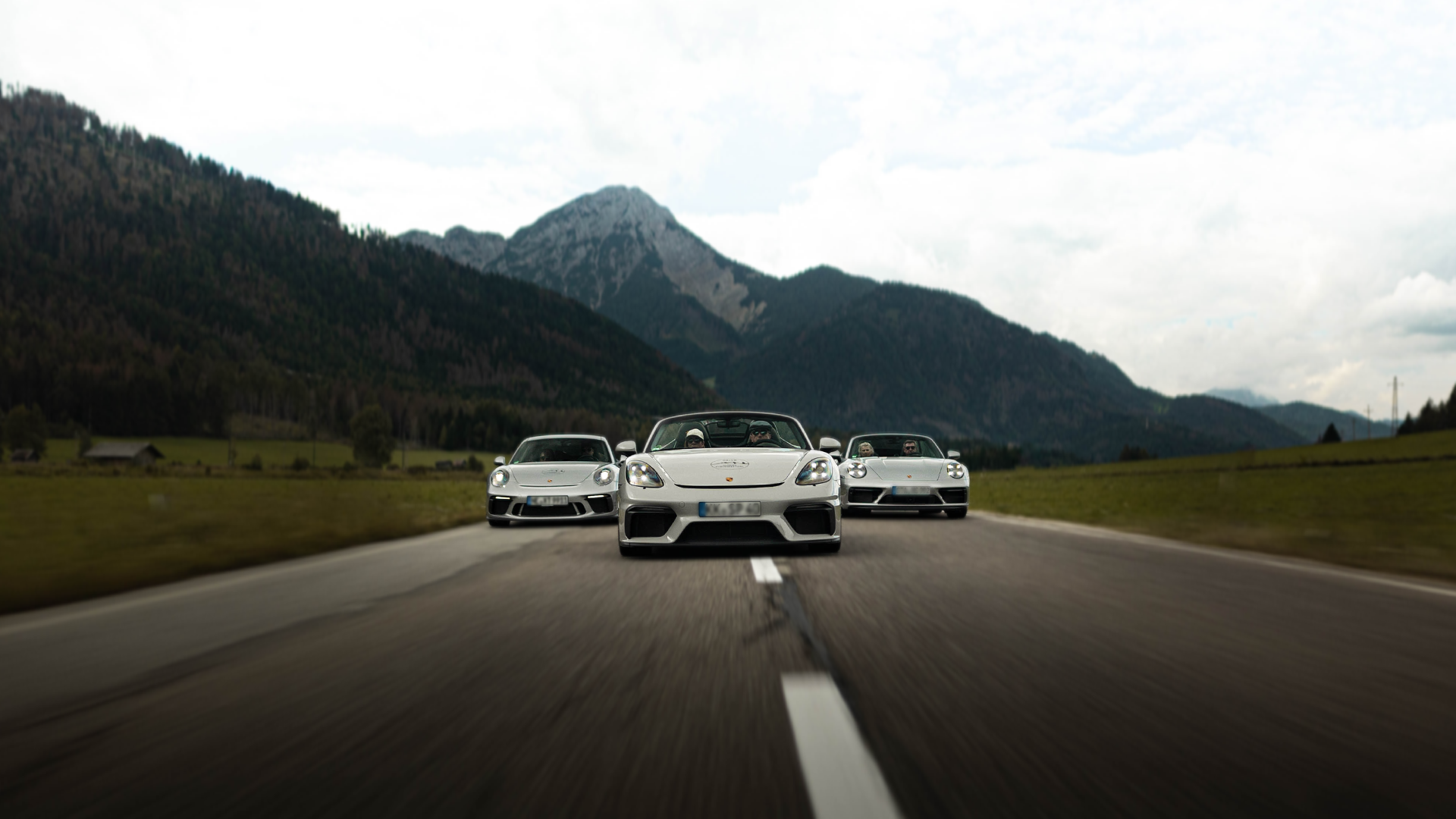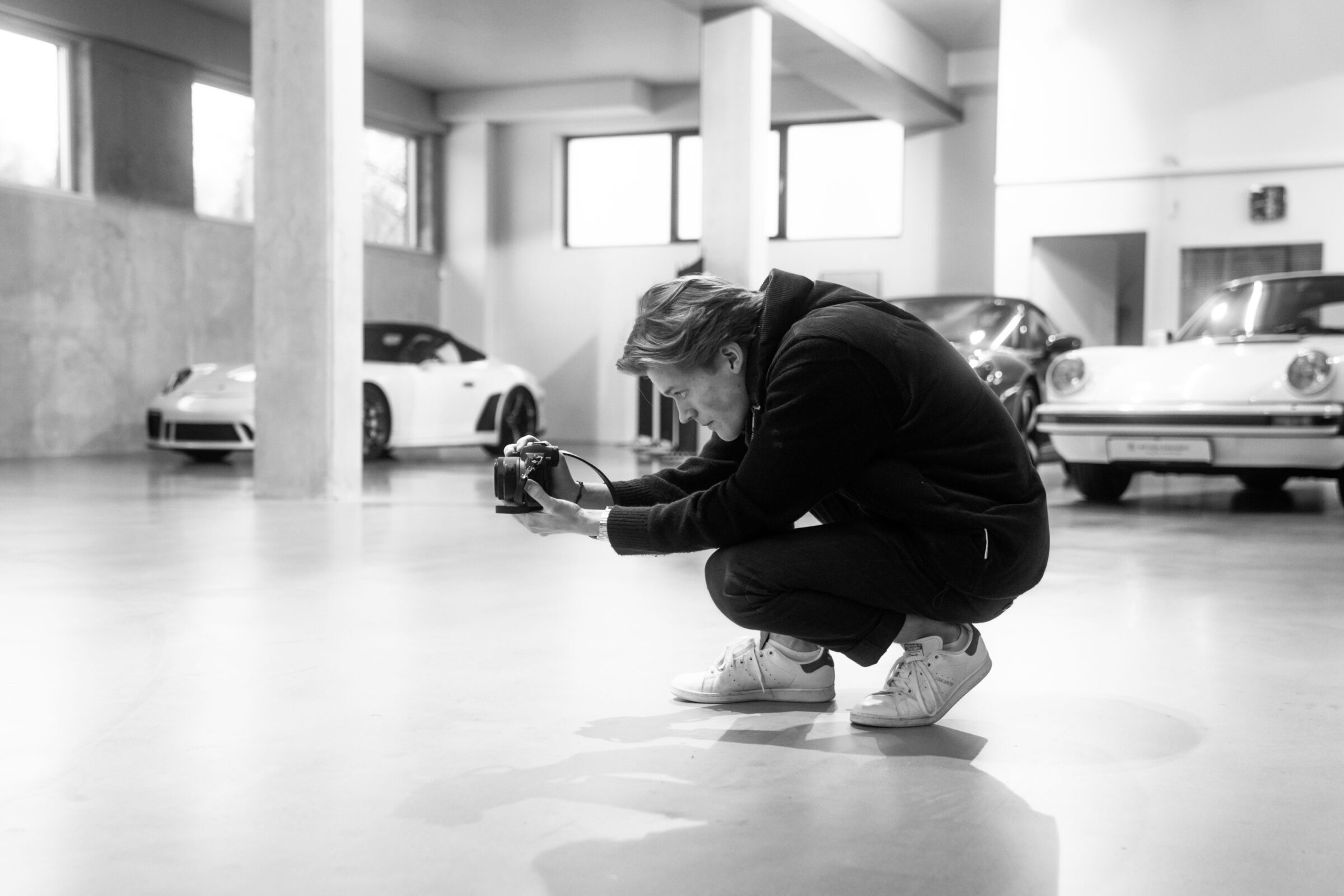Alfa Romeo – The early years
In the official documents, the founding date for the Italian car brand Alfa Romeo is June 24, 1910, and the company is currently celebrating its 110th anniversary. However, if you look deeper into the brand history, you will discover that the real beginnings date back earlier. The driving force behind this was the Frenchman Pierre Alexandre Darracq, who was known above all for his broad moustache and excellent business acumen. He began with the production of bicycles in Bordeaux and entered the automobile industry in 1896. In France, he was able to quickly achieve sales success with his models, which gave him the desire to expand abroad. To this end, he signed a cooperation agreement with Opel, which resulted in the production of vehicles under brand name Opel Darracq in Germany until 1907. In addition, he founded the A. Darracq Company in Great Britain in 1905 and had a new production facility built in Portello, a suburb of Milan, in 1906. Together with the Milanese aristocrat Ugo Stella, he founded the Societa Italiana Automobili Darracq (SIAD), which produced the French models under licence. However, with their simple, lightweight construction and relatively low engine power, they didn’t meet the demands of the Italian clientele. This led to the fact that Pierre Alexandre Darracq withdrew from Italy already in 1909.
His managing director and former partner Ugo Stella didn’t want to accept this backdown so easily. Together with other local businessmen and with the help of the Milan Agricultural Bank, which signed a guarantee, he purchased the factory buildings in Portello and rehired some 200 former employees. They were now to devote themselves to building cars specifically developed for the Italian market. For this purpose Stella had recruited the right man in his eyes. Although Giuseppe Merosi was actually a trained land surveyor, he had already turned his passion for automobiles into a profession a few years earlier and had gained experience with various manufacturers. In autumn 1909 Ugo Stella commissioned him to develop two completely new chassis for the Italian tax classes 12 HP and 24 HP. It was important that these chassis were prepared for the construction of different bodies. As early as 1 January 1910 Merosi handed over his planning and construction sketches to a technical office, which Stella had already set up in the Portello factory. Just about six months passed before the Anonima Lombarda Fabbrica Automobili, or A.L.F.A. for short, was founded. So there was, at least on paper, already a new car, without the corresponding brand existing.
For the large A.L.F.A. 24 HP, Merosi had developed a monoblock four-cylinder engine, unusual for its time, which produced 31 kW/42 hp from four liters of displacement. This power was transmitted via a cardan shaft to the manual four-speed transmission and then to the rear axle. The topspeed was 62 mph. U-shaped pressed steel profiles formed the longitudinal and cross members of the frame, on which coachbuilders such as Castagna, Bollani, Sala or Schieppati built independent bodies. Apart from limousines, there were mainly so-called torpedo bodies, i.e. four-seater convertibles with four doors. From today’s point of view, the 24 HP would be categorized as a premium vehicle, since at that time it cost as much money as simple workers earned in about two years. This illustrates well for which clientele automobiles were still intended in 1910. Technologically avant-garde, charismatic and sporty as the car was, it set the characteristics of many subsequent models for the 110 years to date and the future.


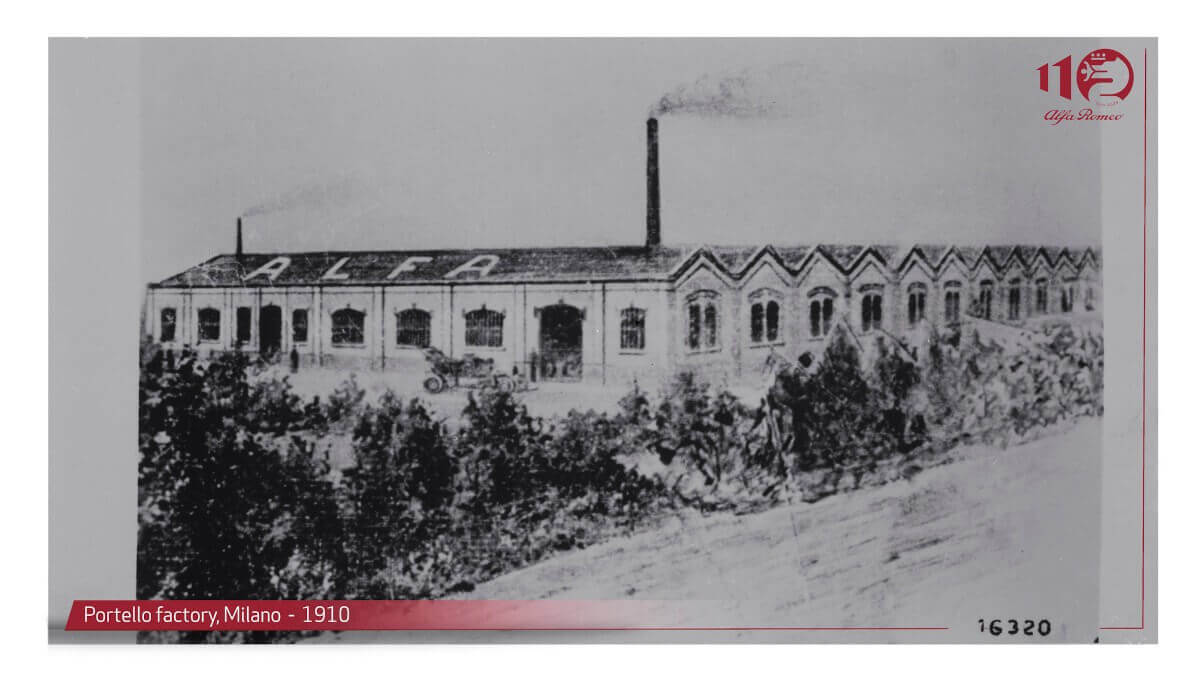

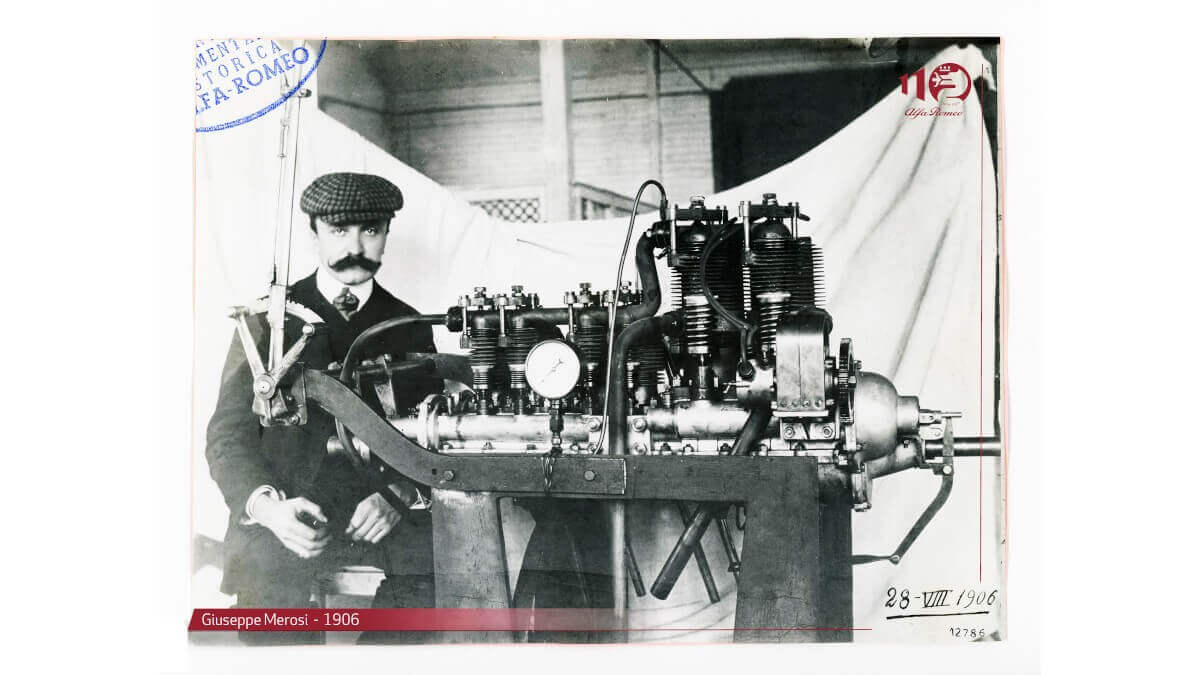

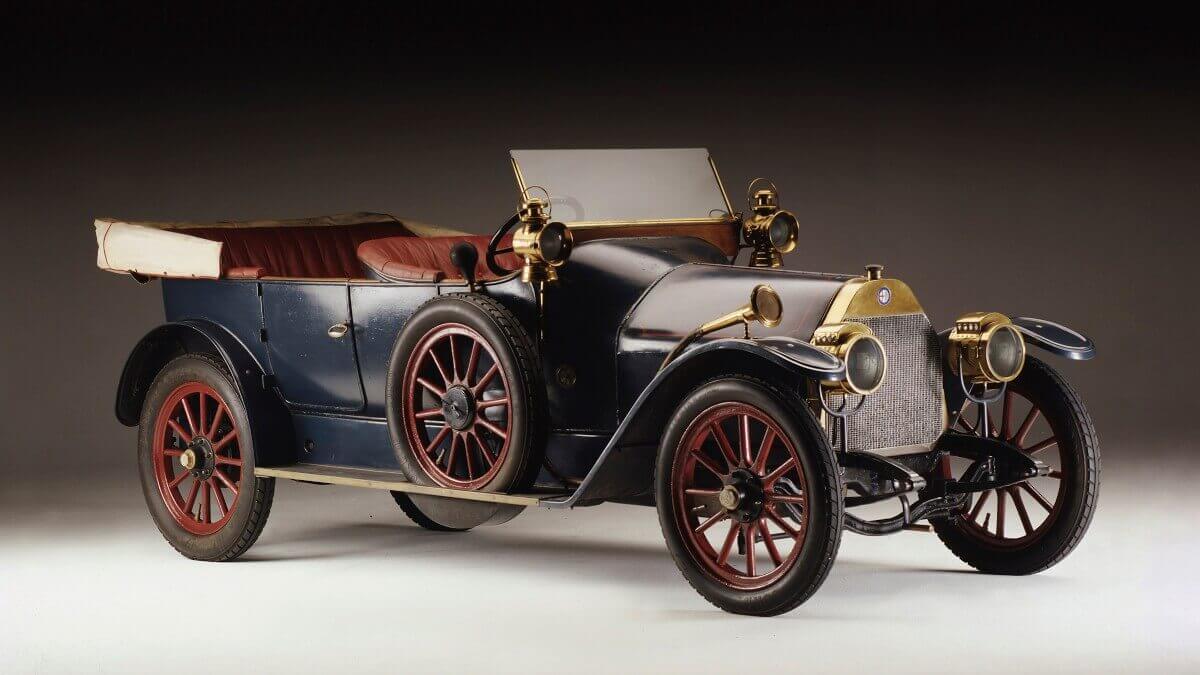

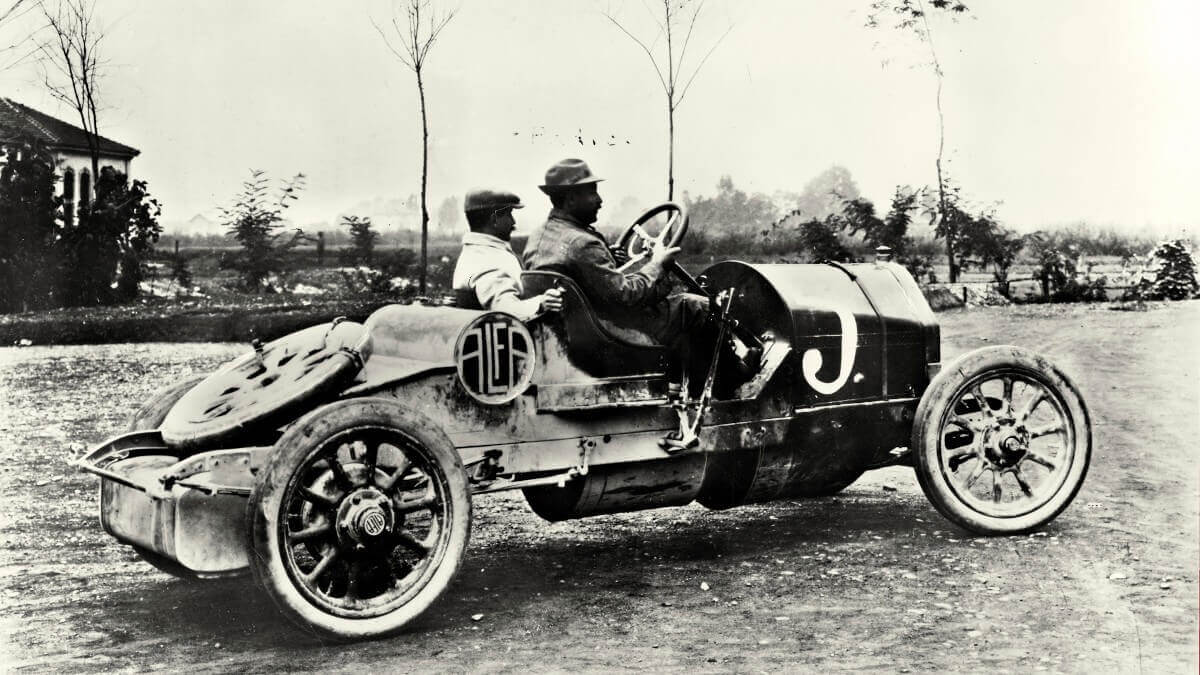

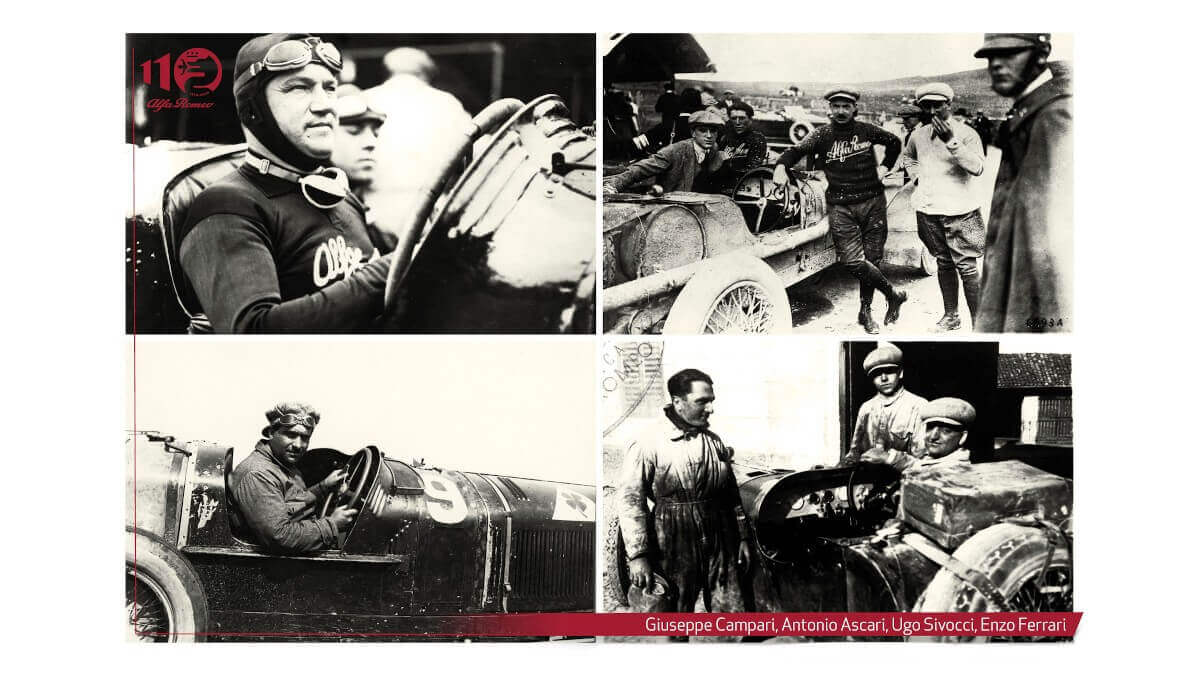

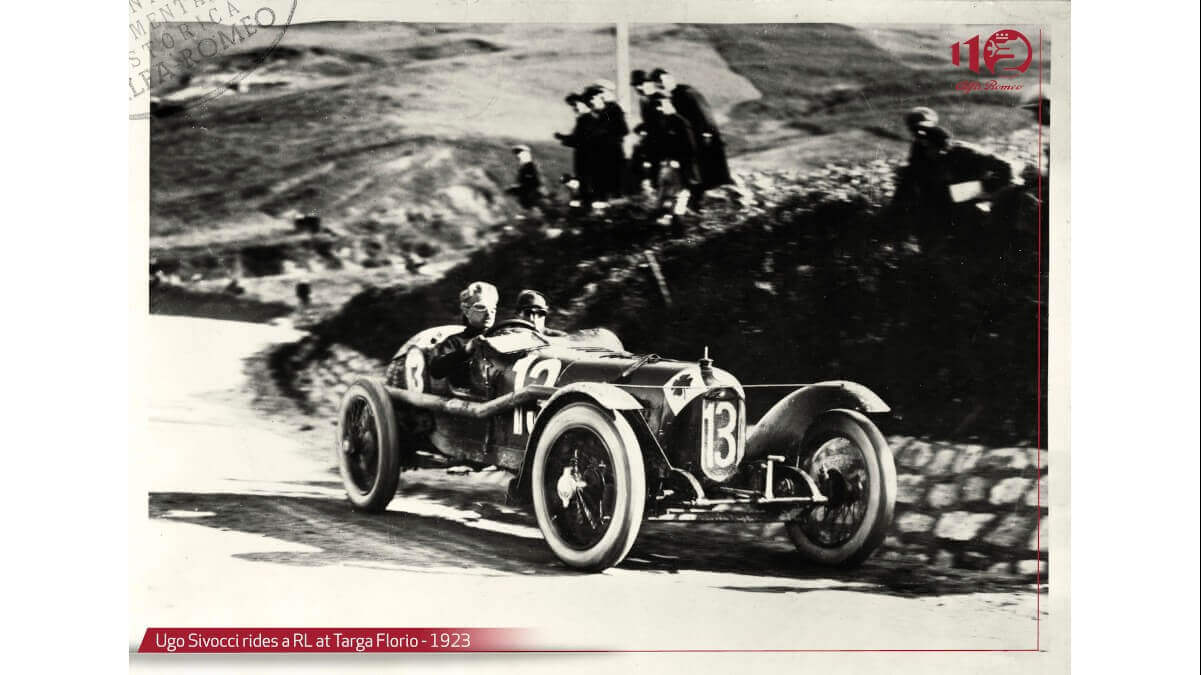



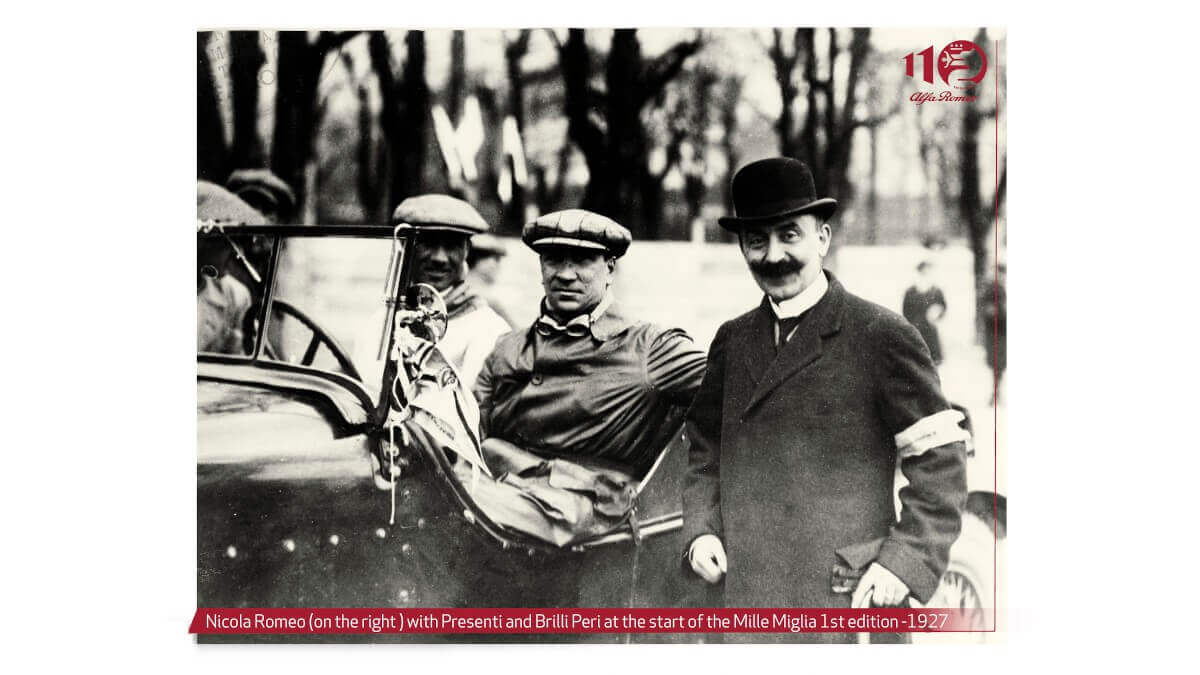

As early as 1911, the racing version 24 HP Corsa with less weight and more power weng to the start of some motorsport events. At the Parma-Poggio di Berceto hillclimb race, a second place overall and the class win by Nino Franchini marked the first success of the brand, that could be used in newspapers to boost sales figures. Giuseppe Merosi then developed the new Tipo 40/60 HP for 1913 with a 6.1-liter four-cylinder engine which produced 51 kW/70 hp. Interestingly enough, this type, which was actually designed as a racing car, first made headlines elsewhere, as Count Ricotti had a revolutionary and unusual bodyshape made at the Carrozzeria Castagna. With its teardrop shape, this followed the latest aerodynamic findings and thus enabled a topspeed of 139 kph (86 mph). However, for the viewers of that time this one-off must have looked like the submarine from Jules Verne’s novel ‘20,000 Leagues Under the Sea’. Today, this vehicle can be seen in the Alfa Romeo factory museum.
With the outbreak of World War 1, the Italian government called on all car manufacturers to switch production to wartime products. A.L.F.A. was taken over on December 2, 1915 by the group of companies directed by the young engineer Nicola Romeo, who added a smeltery and foundry to the production halls in Portello. He also purchased new machine tools and production equipment in the USA, which were first used to manufacture ammunition and aircraft engines. Despite the war, the number of employees rose to 1,200 people. Nicola Romeo simultaneously owned several large engineering companies. A dispute soon broke out with the founders of A.L.F.A. over the use of the rights to the brand name, which was resolved by renaming the company into Alfa Romeo. With the Tipo 20/30 HP and the derived 20/30 HP ES Sport, the first models with the new brand name rolled off the production line soon after the end of the war. With racing drivers like Giuseppe Campari, Antonio Ascari, Ugo Sivocci and a certain Enzo Ferrari the brand also returned to car racing. In road races such as the Targa Florio in Sicily as well as in hillclimbs, the brand has always been one of the fastest competitors. However, it was still not enough for major international victories.
In November 1921 the new Alfa Romeo RL made its debut at the London Motor Show as “the Italian contribution to the most elegant cars in the world”, as the British press titled it. Giuseppe Merosi had hereby created his masterpiece with a three liter six-cylinder engine which produced 41 kW/56 hp. This allowed a topspeed of 110 kph (68 mph). The precise handling was praised by many drivers. Two years later, a racing version of the RL, reduced to 980 kilograms kerb weight, appeared, which Alfa Romeo sent with a factory team to the Targa Florio, where Ugo Sivocci and Antonio Ascari finally achieved the first overall victory for the Italian manufacturer. Sivocci put this on his lucky charm, a green four-leaf clover on a white background that had been painted on the bonnet. Since then, the ‘Quadrifoglio Verde’ has remained an integral part of the brand’s history. Under the leadership of Enzo Ferrari, who had poached the talented constructor Vittorio Jano from Fiat, the racing department became more and more specialised and constructed independent cars, which had little to do with the production cars for the road. Jano introduced the supercharging of small-volume engines by means of superchargers and, with a new chassis, developed the Tipo P2, which enabled Antonio Ascari to win directly at the premiere in 1924 at the Cremona circuit. Further successes such as the title in the first-ever World Championship consolidated Alfa Romeo’s reputation as a constant in Grand Prix racing. From then on the brand logo was given a silver laurel wreath.
Images: Alfa Romeo


